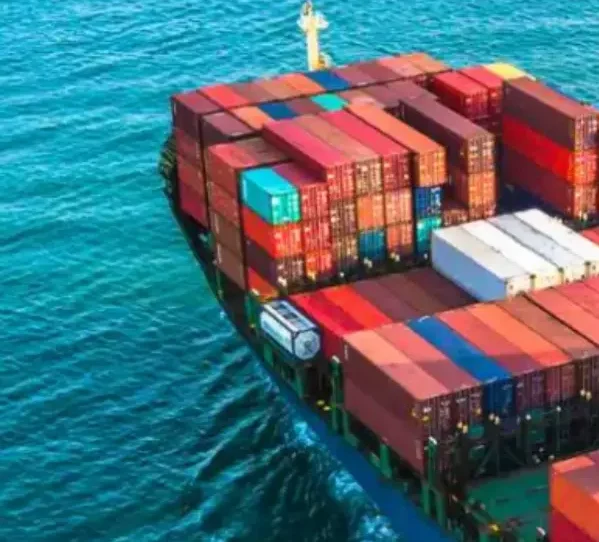When to Choose Sea Freight Over Air Freight

Shipping goods internationally involves many decisions, with the choice between sea freight and air freight being among the most significant. Each method has unique advantages and challenges, making the selection process dependent on factors such as cost, transit time, shipment size, and environmental impact.
Sea Freight vs. Air Freight: Key Differences
Understanding the core differences between sea freight and air freight is the first step in making an informed decision.
- Transit Time
- Air Freight: Generally the fastest shipping method, ideal for time-sensitive goods. Typical transit times range from 1-7 days.
- Sea Freight: Much slower, with transit times varying between 20-40 days, depending on the route and weather conditions.
- Cost
- Air Freight: Often more expensive due to higher operational costs, including fuel and airport fees.
- Sea Freight: Typically more economical, particularly for large, heavy shipments.
- Shipment Size
- Air Freight: Best suited for smaller shipments with high value. Weight and size restrictions are stricter.
- Sea Freight: Accommodates a wide range of shipment sizes, from small pallets to large containers. Full Container Load (FCL) and Less than Container Load (LCL) options make it versatile.
- Environmental Impact
- Air Freight: Produces significantly more CO₂ emissions per ton-mile than sea freight.
- Sea Freight: A more eco-friendly option for environmentally conscious businesses.
Cost Considerations When Choosing Sea Freight
Cost is often the deciding factor when choosing a shipping method. Here’s why sea freight shipping can be the more economical choice:
- Economies of Scale
Sea freight is cost-efficient for bulky shipments. A standard 20-foot container can hold approximately 10,000 kg of goods, offering a much lower cost per kilogram than air freight.
Example: A retailer importing furniture from Asia to the U.S. would save significantly by shipping via sea freight instead of air, as the cost difference could amount to thousands of dollars for a single container.
- Reduced Surcharges
Air freight involves additional surcharges, such as fuel, security, and handling fees, which are minimal in sea freight.
- Flexible Pricing Options
Sea freight offers FCL and LCL pricing structures. Businesses with smaller shipments can opt for LCL, sharing container space and splitting costs with other shippers.
- Long-Term Contracts
Companies shipping frequently can secure competitive rates with Contract Rate Management Systems like CRMS, allowing real-time ocean freight rate monitoring to minimize costs.
Best Scenarios for Choosing Sea Freight Over Air Freight
Some situations naturally favor sea freight shipping. Let’s explore a few scenarios:
- Heavy or Bulky Shipments
Due to cost and logistical feasibility, large items like industrial machinery, vehicles, or construction materials are best transported by sea freight.
Example: A construction company importing cranes from Europe would choose sea freight for its ability to accommodate oversized cargo at a fraction of the cost of air freight.
- Non-Urgent Goods
When time isn’t critical, businesses often prefer sea freight to save money.
Example: A retailer stocking seasonal inventory months in advance can afford the longer transit time of sea freight.
- High-Volume Shipments
Businesses shipping large quantities of goods, such as agricultural products or textiles, find sea freight more suitable.
Example: An exporter of grains from the U.S. to Africa would benefit from the capacity and cost-effectiveness of sea freight.
- Environmentally Conscious Operations
Companies prioritizing sustainability often select sea freight due to its lower carbon footprint.
Example: An eco-conscious brand importing bamboo products would align its values with sea freight’s greener impact.
Environmental Benefits of Sea Freight
With the increasing emphasis on sustainability, sea freight shipping stands out as the more environmentally friendly option.
- Lower CO₂ Emissions
Sea freight produces significantly fewer emissions per ton-mile compared to air freight. According to industry studies, shipping by sea is about 10-40 times more energy-efficient than by air.
- Reduced Noise Pollution
Ships operate with relatively low noise levels compared to the constant drone of aircraft, making sea freight less disruptive to both marine and urban environments.
- Sustainable Innovations
The shipping industry continues to embrace greener technologies, including cleaner fuel options and energy-efficient vessel designs.
- Environmental Regulations
Global initiatives like the IMO 2020 regulation mandate reduced sulfur emissions in maritime shipping, further enhancing its eco-friendly appeal.
Choose CRMS for Your Sea Freight Shipping Needs
Having access to accurate and up-to-date freight rates is crucial for navigating the complexities of sea freight shipping. That’s where Contract Rate Management System (CRMS) comes in.
With over 20 years of experience in the Maritime Shipping industry, CRMS is a trusted partner for businesses seeking reliable and efficient ocean freight solutions. Our premier platform allows you to:
- Access real-time ocean freight rates.
- Monitor contracts effortlessly.
- Make informed shipping decisions to optimize costs and timelines.
Contact us today to explore how we can simplify your freight rate management and empower your business to succeed. Whether you’re moving goods across oceans or exploring cost-effective solutions, CRMS is here to streamline your shipping experience.
